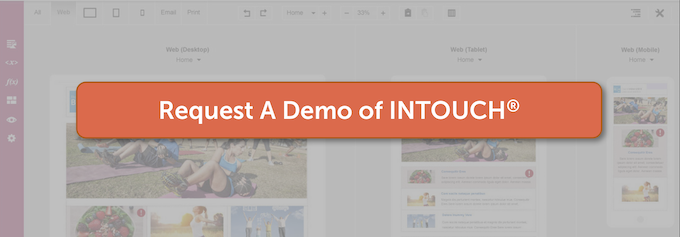Correspondence Management in the Cloud
Have you ever thought about how much correspondence you really need to manage? Think about it: every memo your staff sends—emails and printed letters, document that gets shared with customers, colleagues, and partners—these are all components of an array correspondence that you need to read, delete or respond to in some fashion. Now consider that anything populated with content that moves your business along can benefit from better, more transparent systems. Every piece is important and it all needs to be managed.
Looking at the core concepts of customer communications management (CCM), we get an idea of how much basic interactions have changed due to technology in recent years. Traditional use cases include strong correspondence management essentials and business process management (BPM) for every aspects of business activity—from staff onboarding to contract management; from content building stages to revisions, approvals, electronic and digital signatures to regulatory compliance—the process of creating successful correspondence for business significantly benefited from a high-tech overhaul. Most importantly, without the cloud, some of these innovations would still not be possible.
Let’s take a look at the major capabilities that correspondence management in the cloud provides.

Not so long ago, printed and mailed correspondence was all there was.
The Correspondence Management of Today
Today’s definition of correspondence has exceeded our expectations and imaginations. Previously we confined correspondence management to form letters, statements, invoices, and other common communications, once dominated by print channels. Now we include new forms of communication preferred by our millennial customers and adopted by our staff: text (SMS) and chat app messages (WhatsApp, Facebook Messenger, WeChat, etc.), as well as in-app notifications. Today’s technology tools have the ability to template, personalize, and re-use content so that it can be delivered to customers and partners over multiple communication channels. It is the advent of the cloud-based correspondence management solution that has allowed this innovation not only to be created, but has made it simple and easy to implement.
Automation
As mentioned, efficiency in BPM is an obvious area where we notice cloud-based correspondence management technology changing our day-to-day interactions. Automation through BPM increases efficiency and eliminates human error. The CCM industry has been using automation for over 40 years (via templates, business logic, data integration, etc.), but the cloud is giving us a new level of transparency. In the world of APIs, cloud-based systems can see across solutions, share data, and communicate between platforms to magnify efficiency across the system. With automation, every transaction happens at lightning speed, a key component to building a strong brand identity.
How SaaS Has Expanded Correspondence Management
As correspondence management grows in scope, the reaction as to how companies are choosing to address it is changing too. The shift to the cloud, and especially to software as a service (SaaS) solutions, continues to expand across a multitude of platforms. The centralized functionality and remote accessibility the cloud facilitates continues to provide enterprises with a viable architecture when looking to weather the convergence of CCM and customer experience (CX) so they can quickly grow their market share instead of lagging behind. With easy system integration beyond the typical CRM/ERP lineup, SaaS solutions can handle correspondence management as it evolves to include the most relevant apps and functionality. A cloud-based system gives organizations the ability to avoid the poor ROI and quick obsoletion of an on-premise CCM platform. Plus, with such a low-level entry threshold that SaaS offers, developers and vendors can spend their money investing in important industry trends instead of expending precious resources managing technology purchases. Innovators quickly see that the affordability of SaaS solutions is hard to ignore.
With an ever-growing list of customer communication changes, the cloud offers huge advantages for innovating, simplifying and implementing correspondence management. You get universal access, transparency of information, and automation that help jump-start your productivity. Regardless of how many communication channels your company uses, targeted and effective communications can increase trust and loyalty from both customers and partners. With the newest cloud-based CCM solutions, you can give accurate and personalized attention in real time, every time. As technology continues to move ahead, there is no better or more affordable solution than SaaS for modern correspondence management.
To learn about a user-friendly CCM platform that uses cloud technology (multi-tenant SaaS) to handle modern correspondence management, check out INTOUCH from Topdown.
Image: Unsplash







